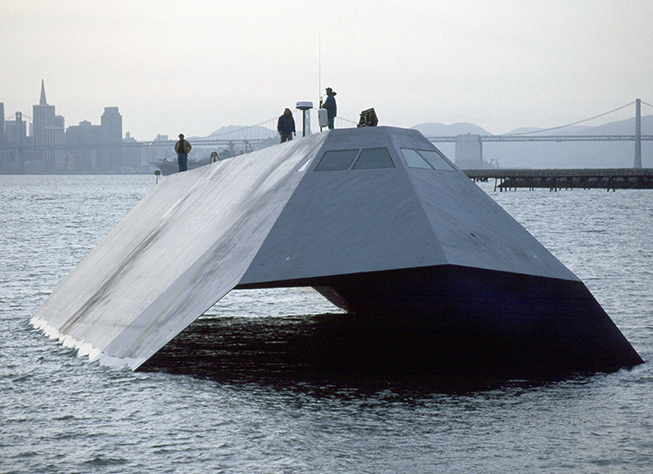Drawing inspiration from his work on the F-117 stealth aircraft, Ben Rich, then head of Lockheed’s Skunk Works, proposed applying the technology concepts he and his colleagues had learned for aircraft to submarines, with the idea of making these vessels undetectable via sonar. Initial tests on a small model suggested the stealth gains could be on the order of a thousandfold, albeit with a cost of speed due to the design.
The Department of Defense did not show interest in this line of investigation until Rich, with input from a colleague, adapted the idea to apply to surface ships. This led to a DARPA contract to apply stealth concepts and materials to surface vessels and to test the effects of seawater on the radar-absorbing materials.
Developed in great secrecy, a prototype, the Sea Shadow (also designated as IX-529) was assembled out of sight within a submersible barge (the Hughes Mining Barge 1) in Redwood City, Calif.
The Sea Shadow’s first trials in 1981 proved greatly disappointing because the ship’s wake was unexpectedly huge and detectable with sonar and from the air. After discovering that the problem was due the motor propellers, which had been installed backwards, the project moved forward. The vessel was completed in 1984 and underwent night trials in 1985 and 1986.
Even so, the Sea Shadow never made it beyond the testing phase, though engineers applied lessons learned in such applications as submarine periscopes and some newer Navy destroyers, including the DDG 1000 Zumwalt-class ships.
In 1993, the public got it first view of the stealth ship, which eventually was scrapped in 2006.
